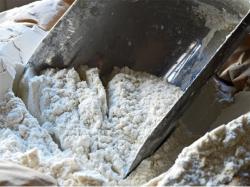ND State Flour Mill Plans $1M Expansion
March 1, 2011 | 1 min to read

North Dakota's state flour mill is planning an expansion this spring.
Mill manager Vance Taylor says the project will increase the mill's flour-making capacity from 9,000 to 10,000 hundredweight per day.
Taylor says it's needed to handle an expected increase in flour demand later this year.
North Dakota's Industrial Commission will review the proposal. Taylor says he's soliciting bids from contractors for the project. He says it will cost about $1 million, and it should be finished by September.
To read the rest of the story, please go to: The Associated Press
